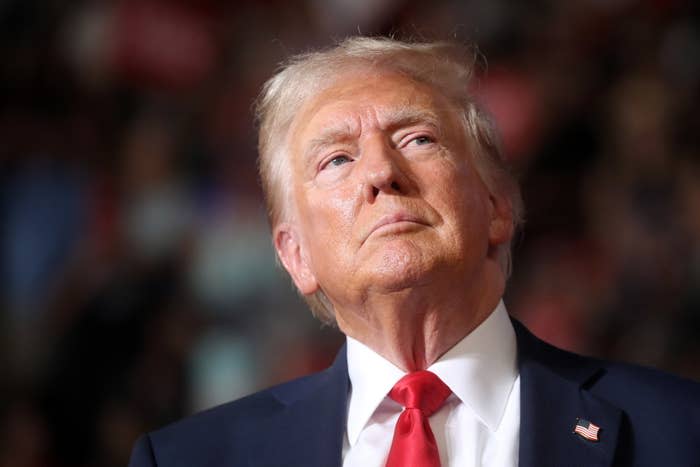Women’s Health
Avoiding This Type Of Drink Could Help Prevent Dementia—Plus, 13 Other Ways To Lower Your Risk, According To Doctors
Korin Miller – January 3, 2025

Dementia is a devastating condition that can affect everything from your thinking to your personality. And while you can’t always control your risk of developing the disease, new research finds there are at least 14 things you can do now to lower your chances down the road.
These “modifiable factors” were spelled out in an August 2024 report published in The Lancet, and doctors say they’re worth paying attention to.
“Simple switches in lifestyle can make a big difference in dementia risk,” says Amit Sachdev, MD, MS, medical director in the Department of Neurology at Michigan State University.
Here’s what you should know, according to doctors.
Meet the experts: Amit Sachdev, MD, medical director in the Department of Neurology at Michigan State University; Heshan J. Fernando, PhD, a clinical neuropsychologist for Corewell Health in Michigan; Verna Porter, MD, a neurologist and director of the Dementia, Alzheimer’s Disease and Neurocognitive Disorders at Pacific Neuroscience Institute at Providence Saint John’s Health Center in Santa Monica, California.
What can you do now to lower your dementia risk?
These are the biggest lifestyle tweaks you can make now to lower your dementia risk, according to the report.
Take it easy with alcohol
Research finds that so-called “heavy” drinkers are more likely to develop dementia than “moderate” ones. But there’s good news: Even dropping your drinking levels from “heavy” to “moderate” will decrease your risk, a 2023 study found.
Avoid smoking
Smoking has been linked to dementia because it can increase the risk of problems with the heart and blood vessels, the Alzheimer’s Society says. Toxins in cigarettes also cause inflammation, which has been linked to Alzheimer’s disease.
Manage diabetes
“A growing body of research has implicated a strong link between metabolic disorders like diabetes and impaired nerve signaling in the brain,” says Verna Porter, MD, a neurologist and director of the Dementia, Alzheimer’s Disease and Neurocognitive Disorders at Pacific Neuroscience Institute at Providence Saint John’s Health Center in Santa Monica, California.
By managing your diabetes, you could by reduce “inflammation in the brain, which in turn helps to protect” it, she says.
Try to maintain a healthy weight
Several studies have linked obesity with a higher risk of dementia—in fact, a scientific analysis published in JAMA in 2022 named obesity as one of the top modifiable causes of it.
Stay on top of your blood pressure
Research has found that lowering blood pressure in people with hypertension can lower the risk of dementia by about 15 percent.
Try to minimize air pollution exposure
Studies have suggested that people consistently exposed to a type of air pollution called fine particulate matter are more likely to develop dementia than those who aren’t exposed to it. These can come from construction sites, unpaved roads, fields, smokestacks or fires, or can be the result of complex reactions of pollutants, according to the Environmental Protection Agency (EPA).
Protect yourself from head injury
Research finds that a history of a single prior head injury was associated with a 1.25 times increased risk of dementia compared to people with no history of head injury. A history of two or more prior head injuries was associated with over two times increased risk of dementia.
Be physically active
Studies show that being physically active can help lower your risk of dementia. “Daily physical exercise—such as 20-30 minutes of light aerobic activity—can include activities such as walking, biking or aquatic pool exercises,” says Heshan J. Fernando, PhD, a clinical neuropsychologist for Corewell Health in Michigan.
Try to manage your mental health
A 2023 study found that people diagnosed with depression were more than twice as likely to be diagnosed with dementia later in life. Medication, therapy, and healthy habits like eating right, exercising, and getting enough sleep can all play a role in treating mental health issues.
Be socially active
“Staying socially engaged may help protect against Alzheimer’s disease and dementia in later life,” Dr. Porter says, adding that it’s crucial to maintain a strong network of family and friends. “Social connections may also be enhanced through volunteer organizations, joining various clubs or social group, taking a group classes, or getting out into the community.”
Treat hearing loss
A 2024 study found that hearing loss is linked to a higher risk of developing dementia. However, hearing aid users were less likely to develop dementia than non-users.
Keep learning
Research has linked higher dementia risk to lower education levels. However, one study found that the odds of developing dementia fall in people who continue to learn.
“Education at any age may protect against cognitive decline,” Dr. Porter says.
Manage your cholesterol
Studies show that high cholesterol is linked with a higher risk of developing dementia and that the risk increases with age. Fernando recommends following a heart healthy diet like the Mediterranean diet that emphasizes fruits and vegetables, lean meats like chicken and fish, whole grains and healthy fats.
This “can help optimize blood flow to the brain,” he says.
Stay on top of your vision
Research has found that untreated vision loss increases the risk of dementia by about 50 percent, so go to the eye doctor when you can.












